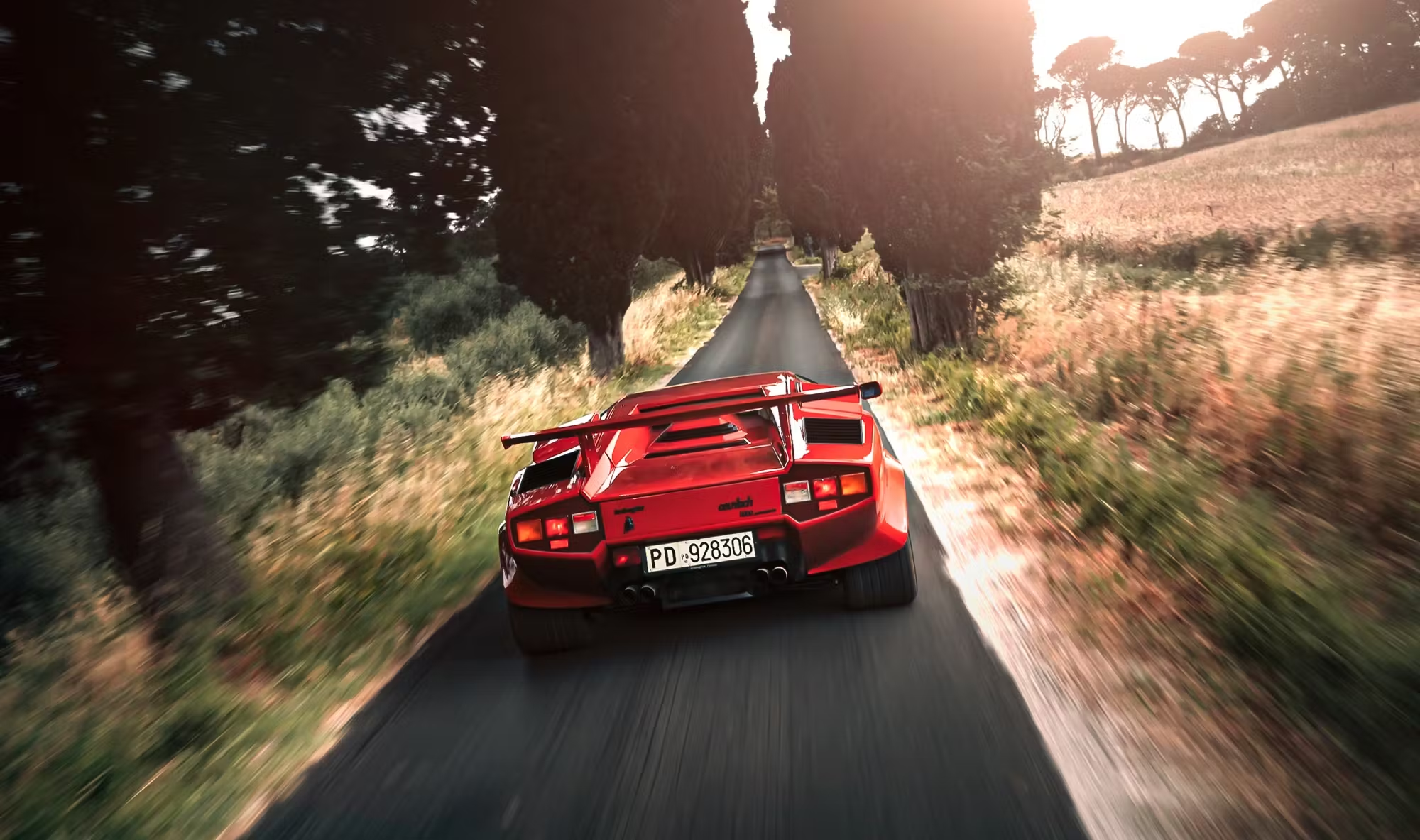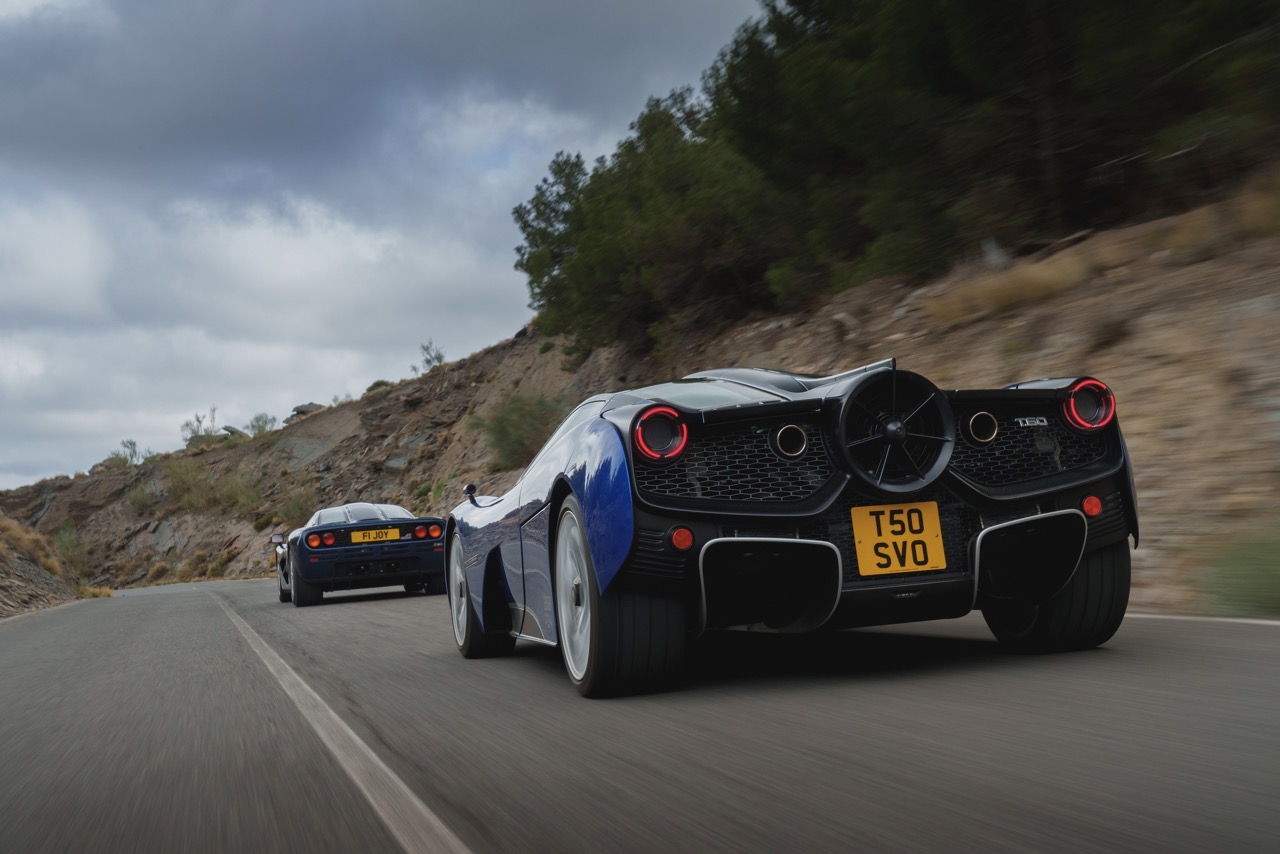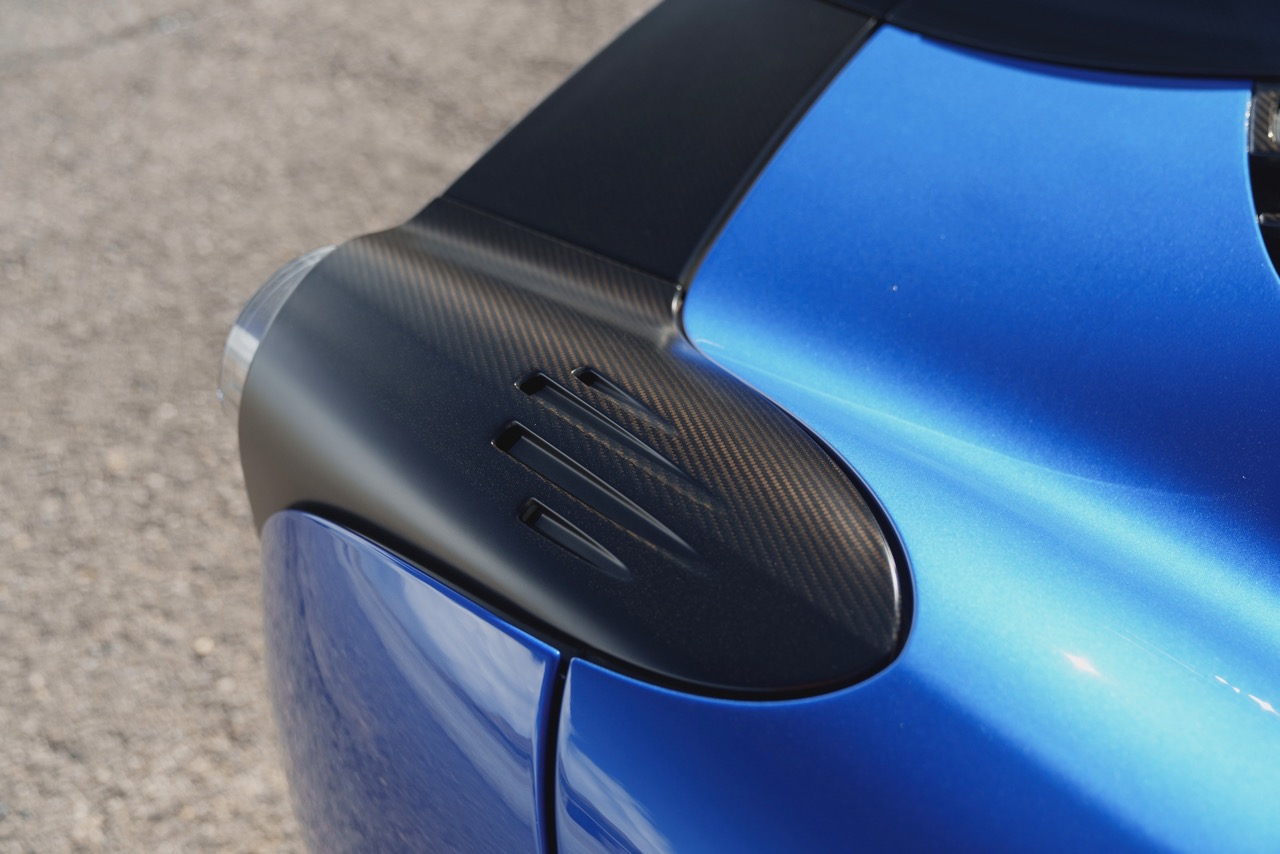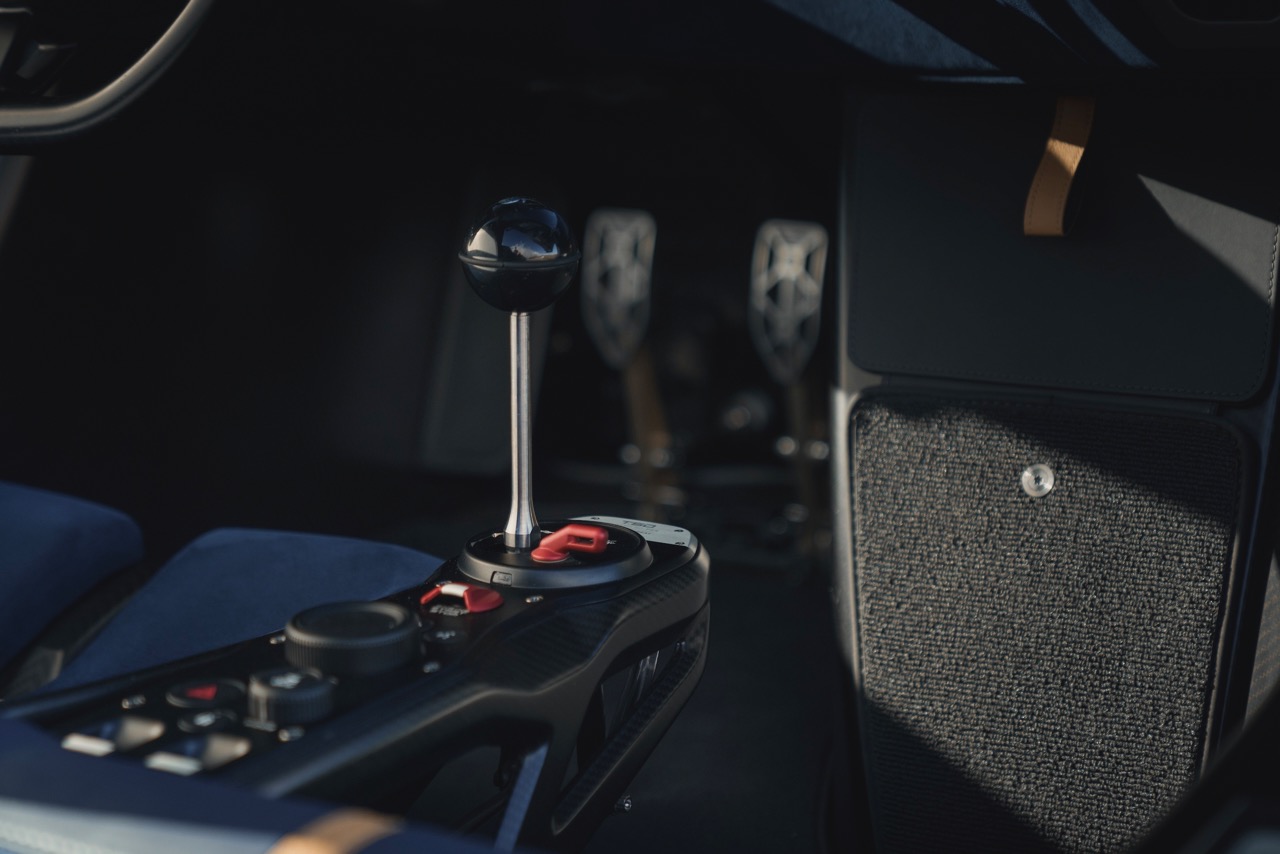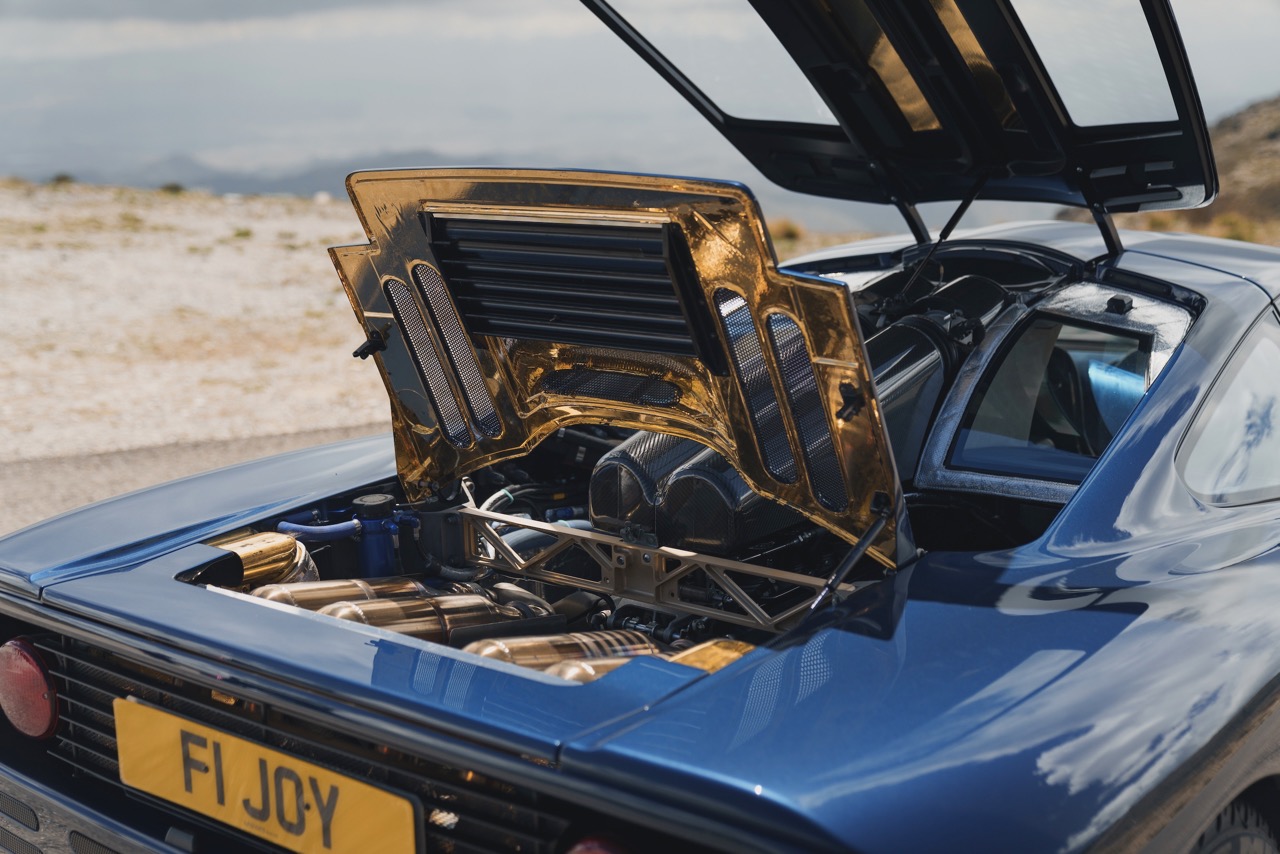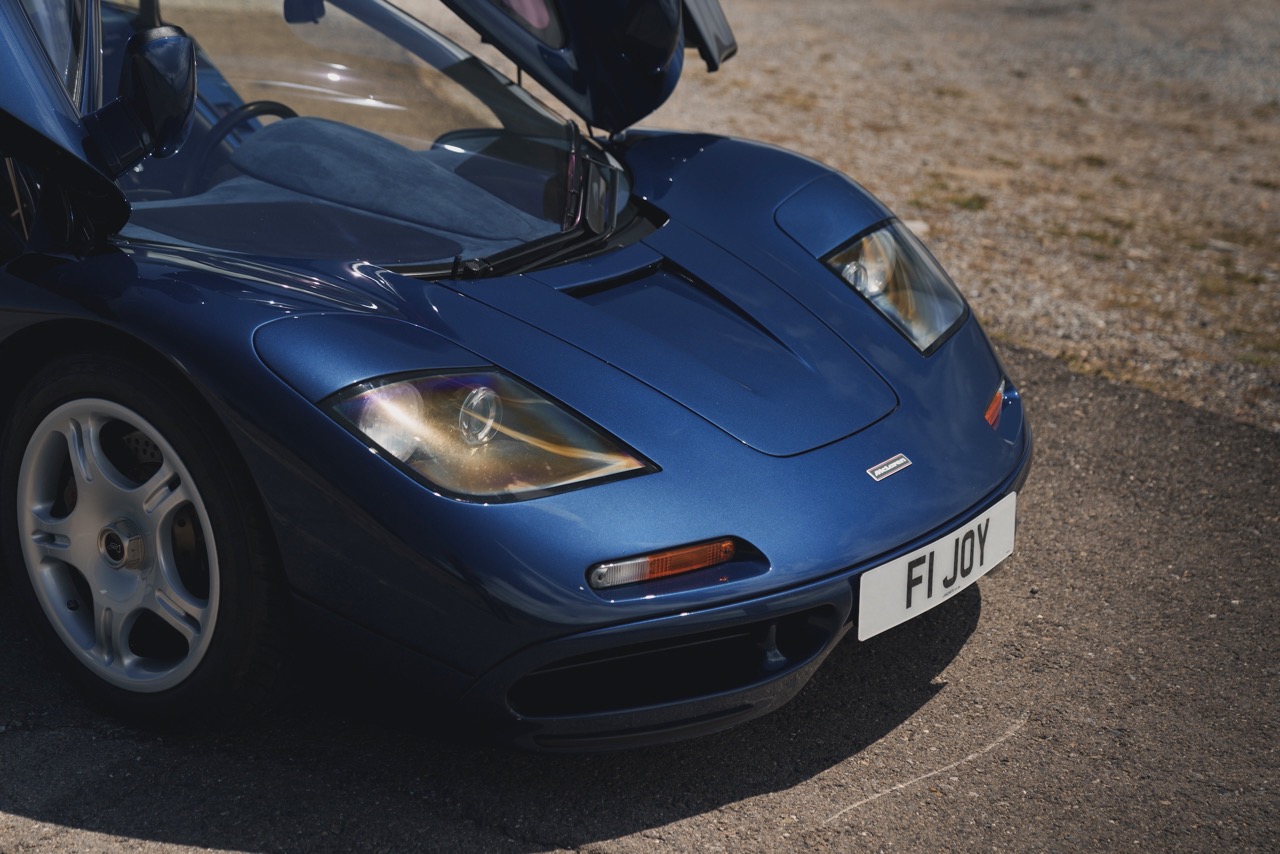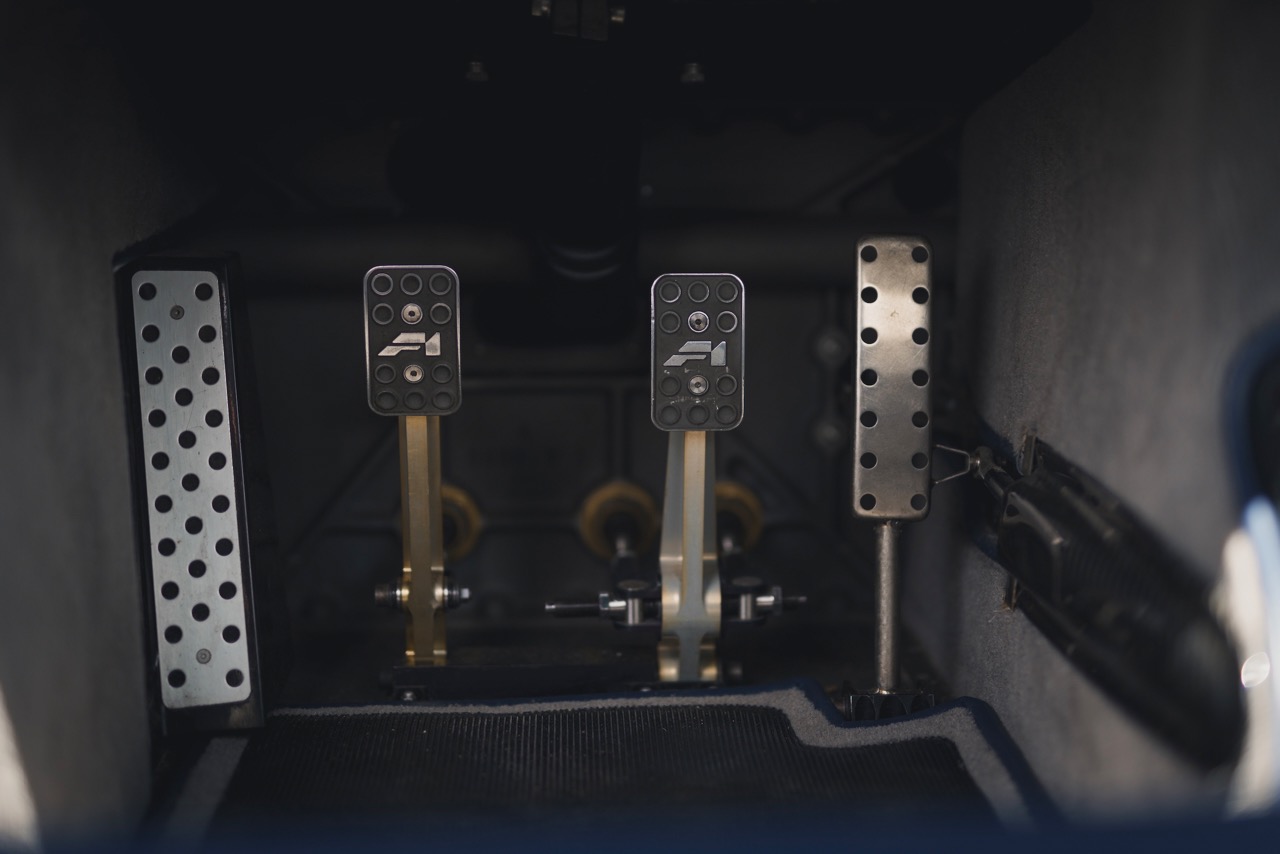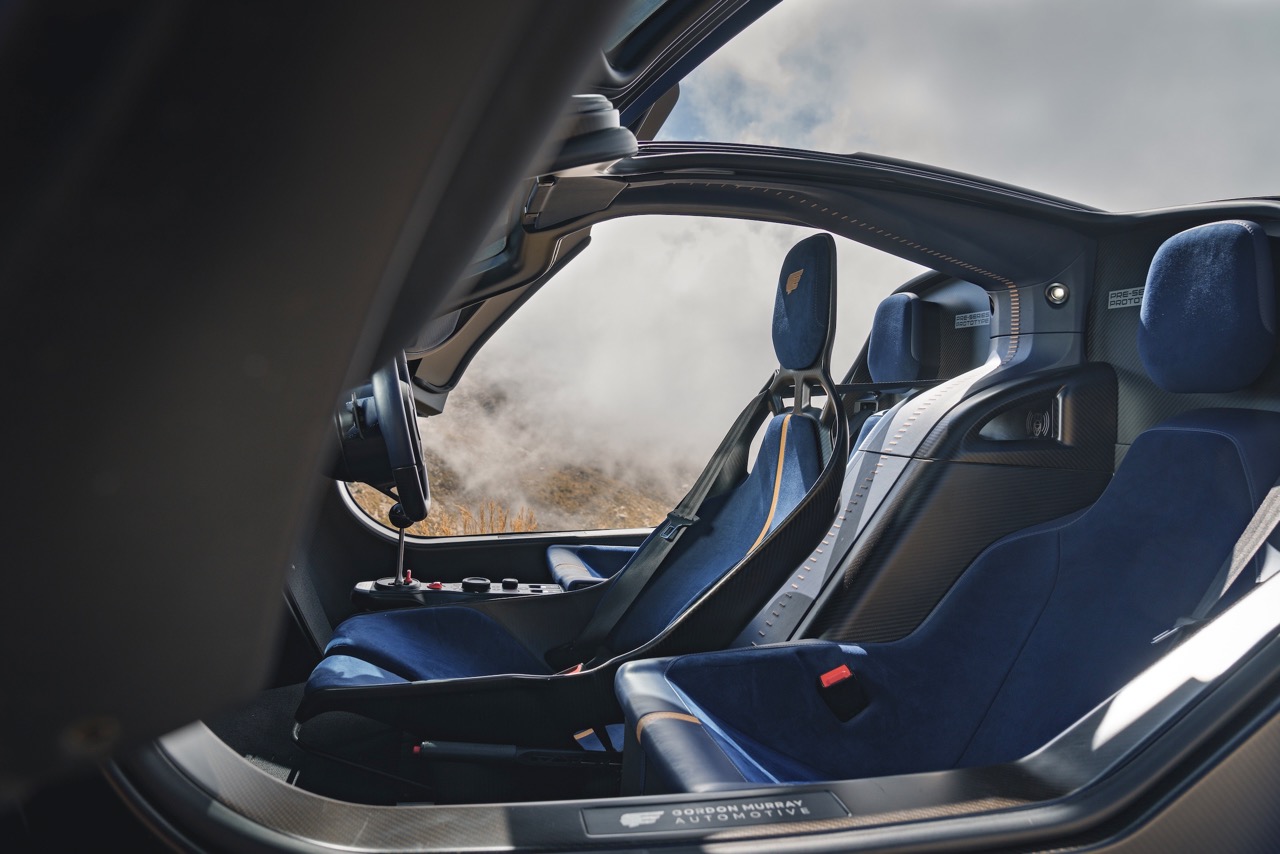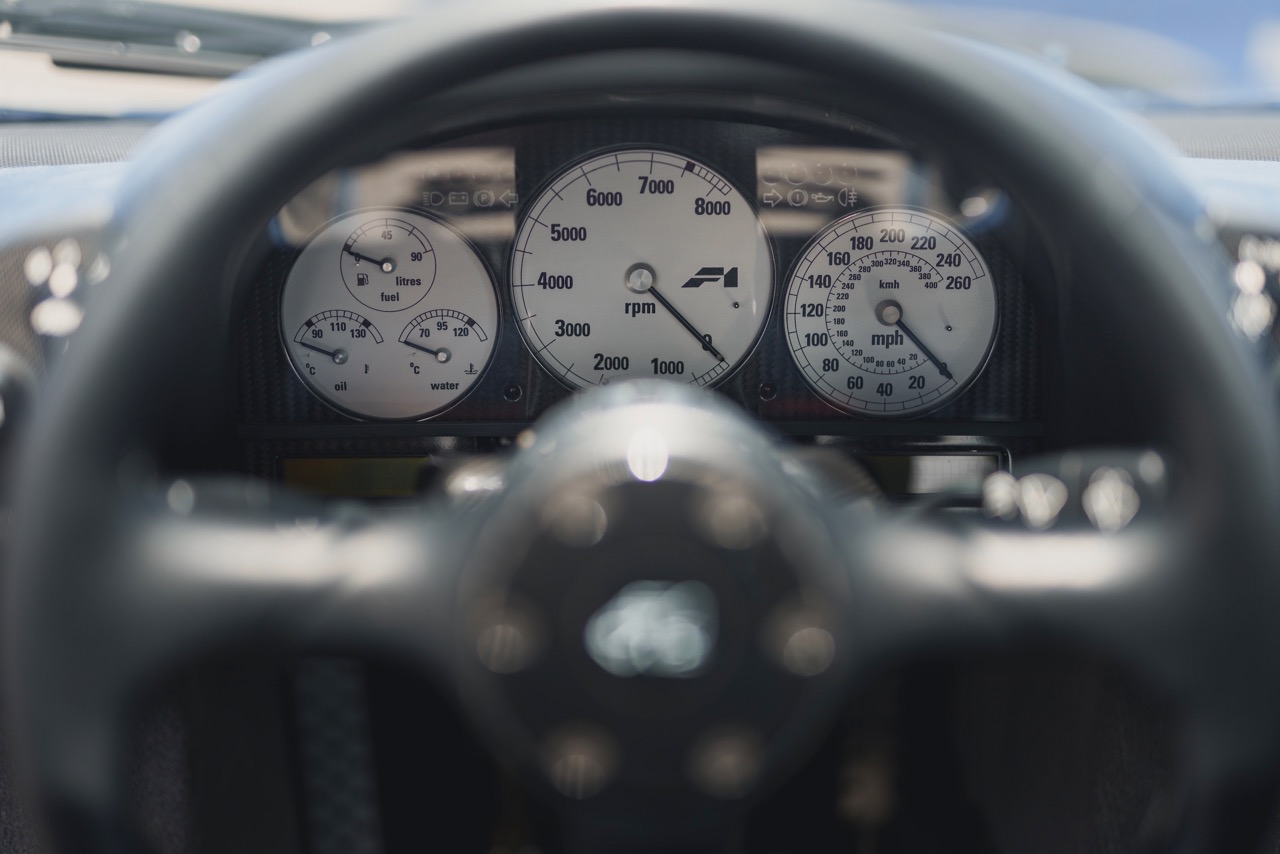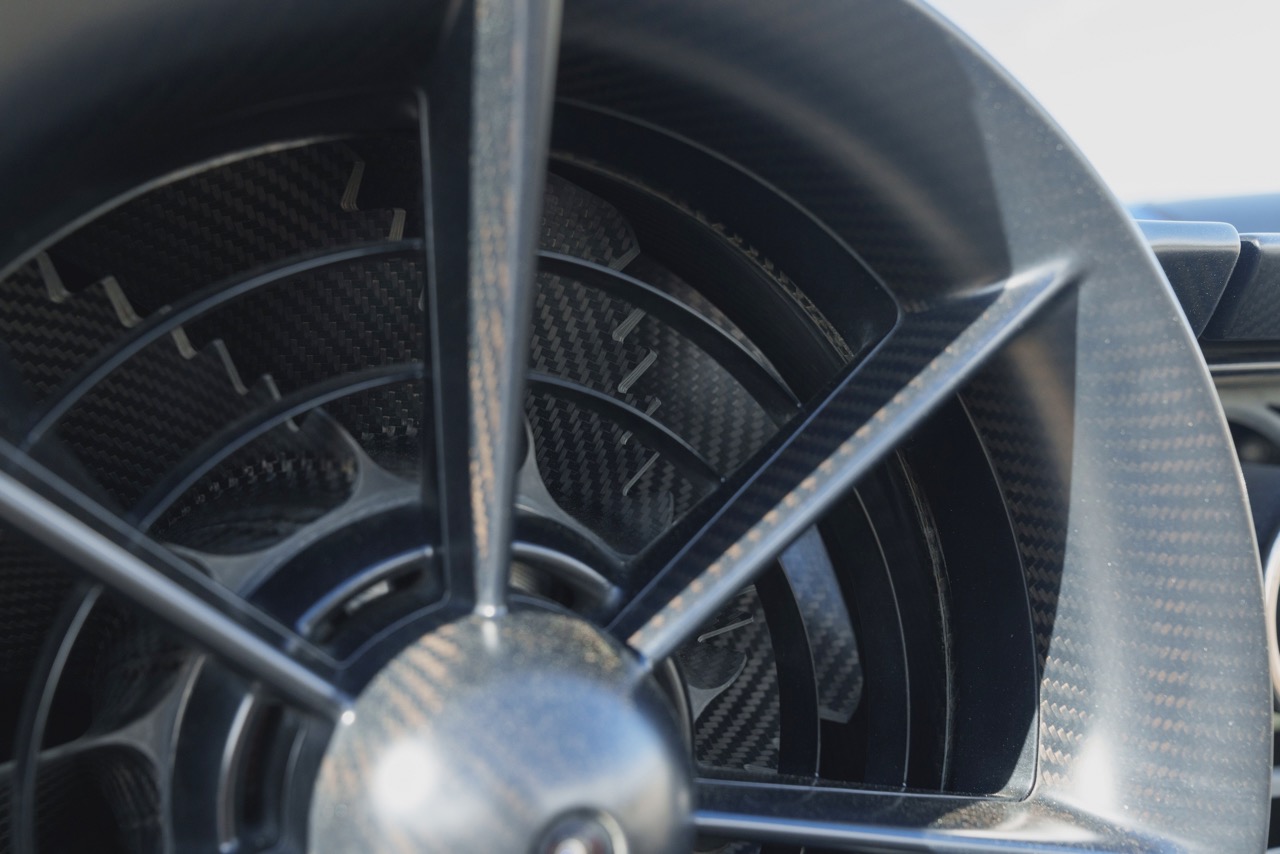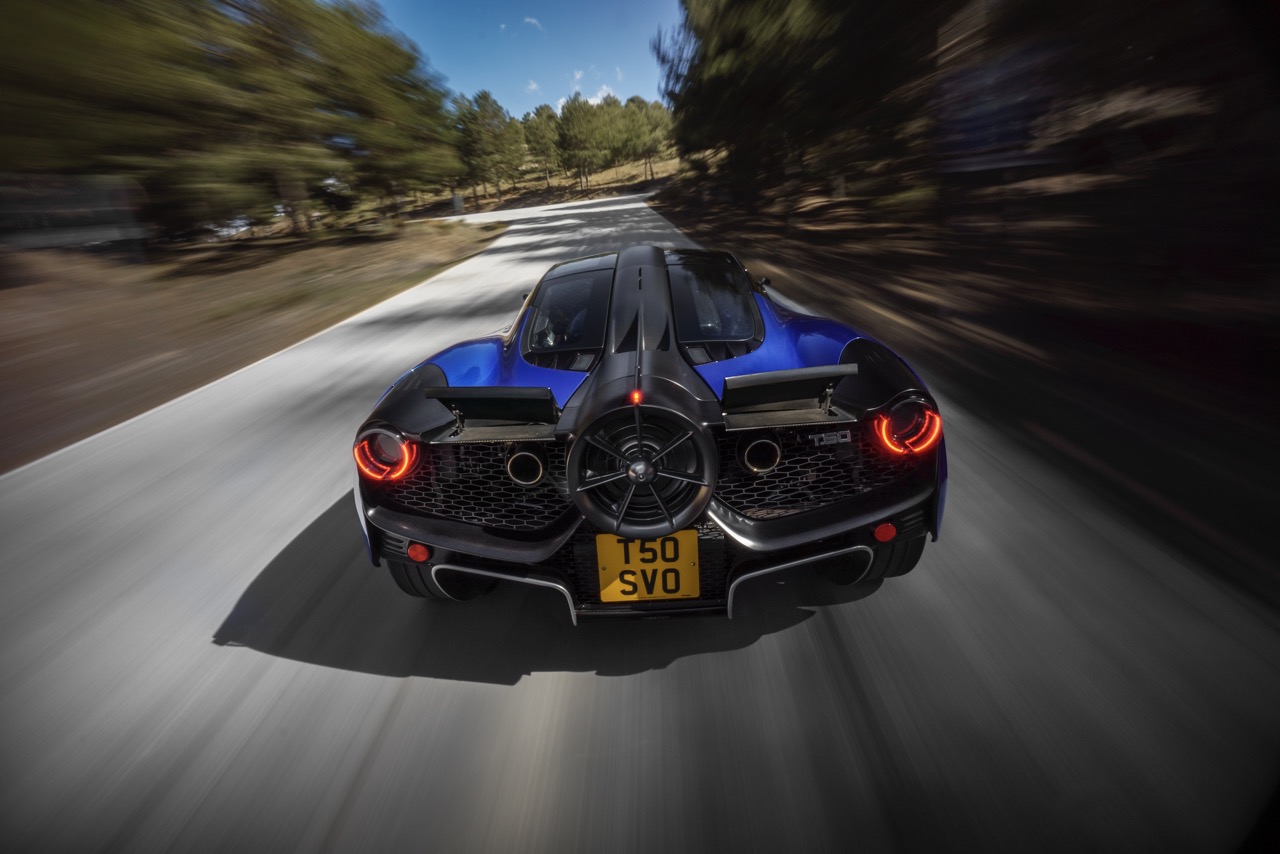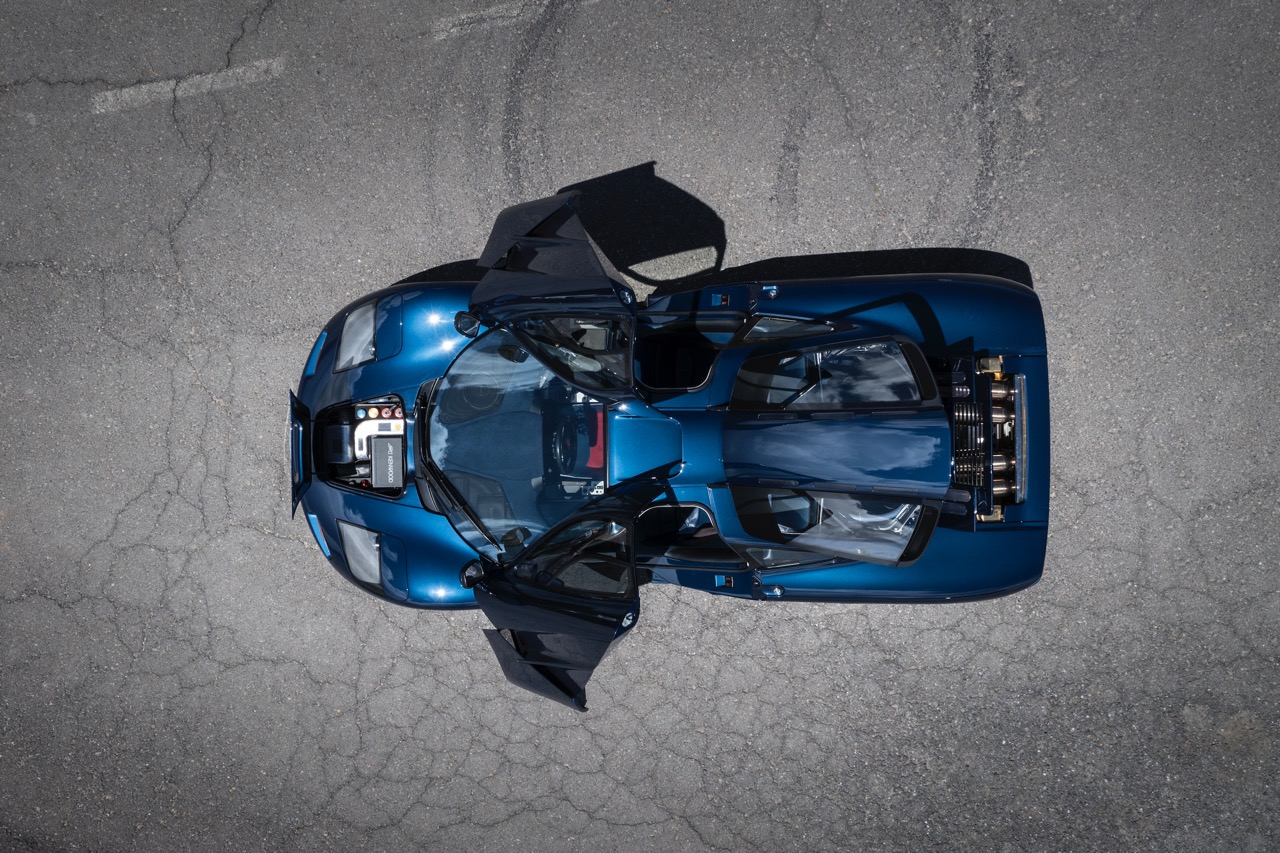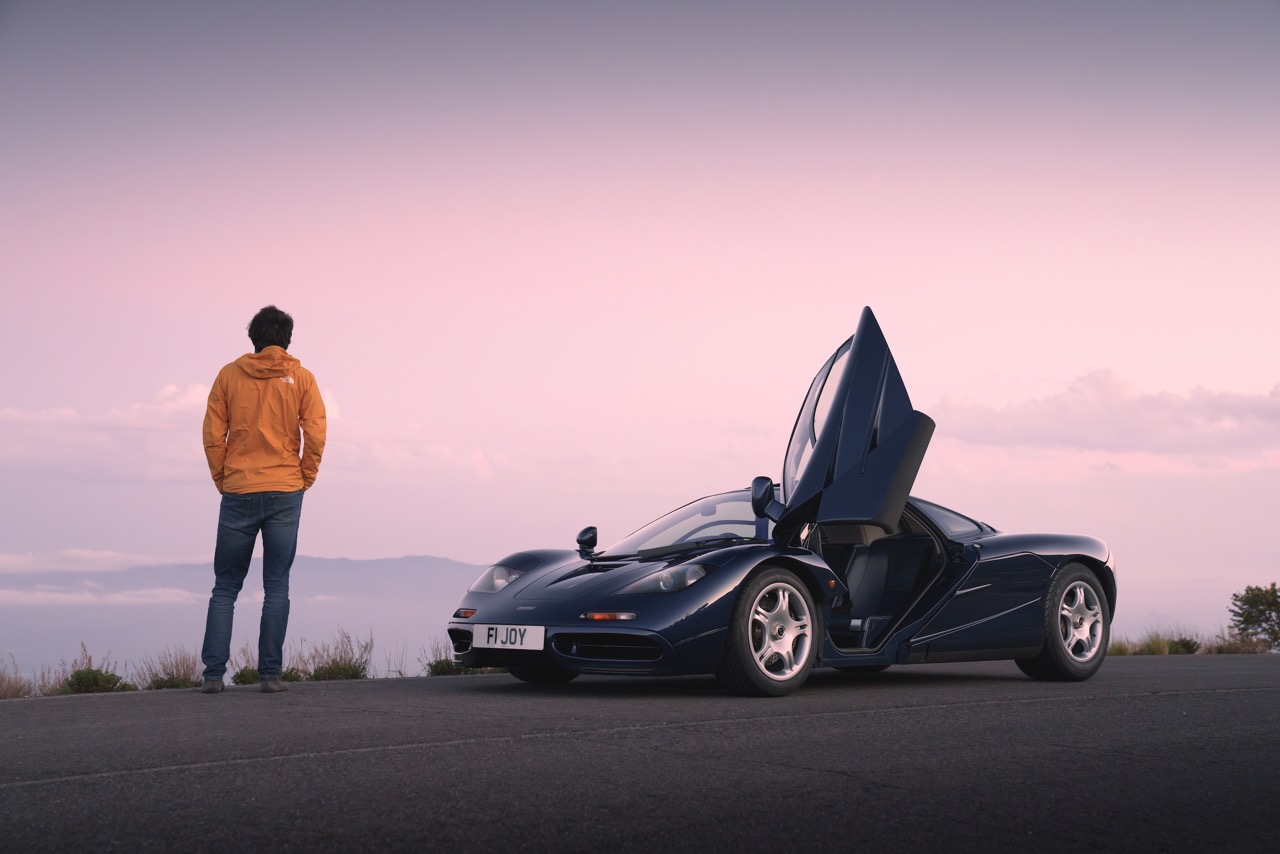The first full-throttle acceleration – once the oil is warm in the engine and the gearbox has lost its initial stiffness – that’s when you really feel how light the McLaren F1 is. Up to that point, you could be forgiven for questioning the 2500-pound weight. The steering is heavy, there is roll and dive and squat and the squeaking brakes don’t quite stop it on a dime. It isn’t a flighty, darty car with the reactions of a gnat that’s just sipped some espresso.
But when you crack the titanium pedal on the right, tugging the cable to open wide the dozen individual throttle bodies behind you, then you feel how little mass there really is. Six hundred and twenty-seven of BMW M’s finest horsepowers propel you up the road with the instant insistence of a little Hot Wheels model launched by a catapult.

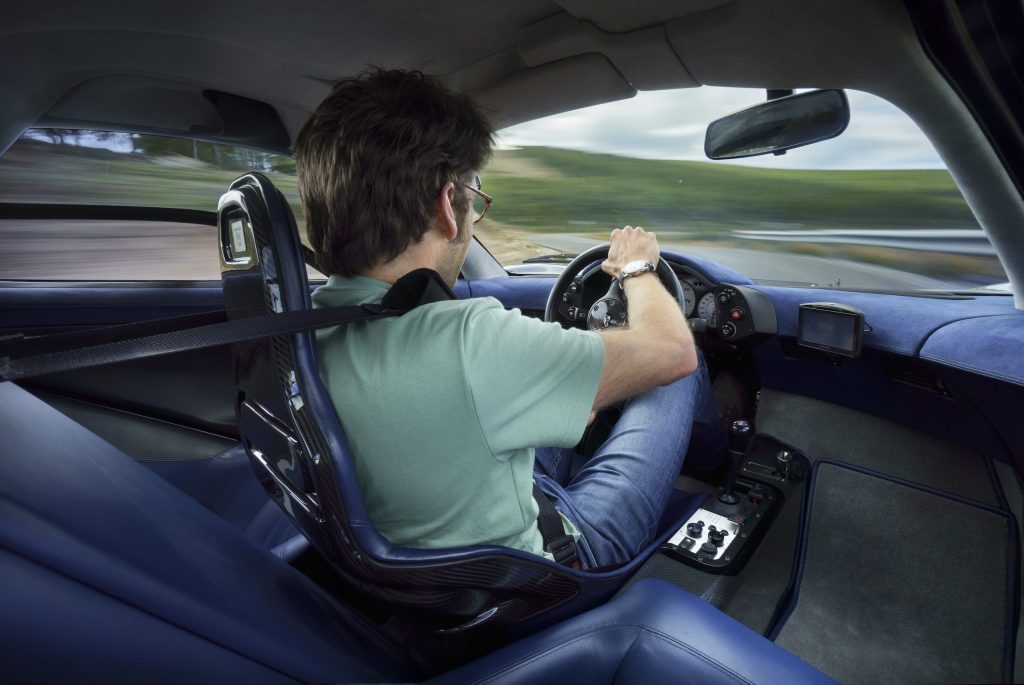
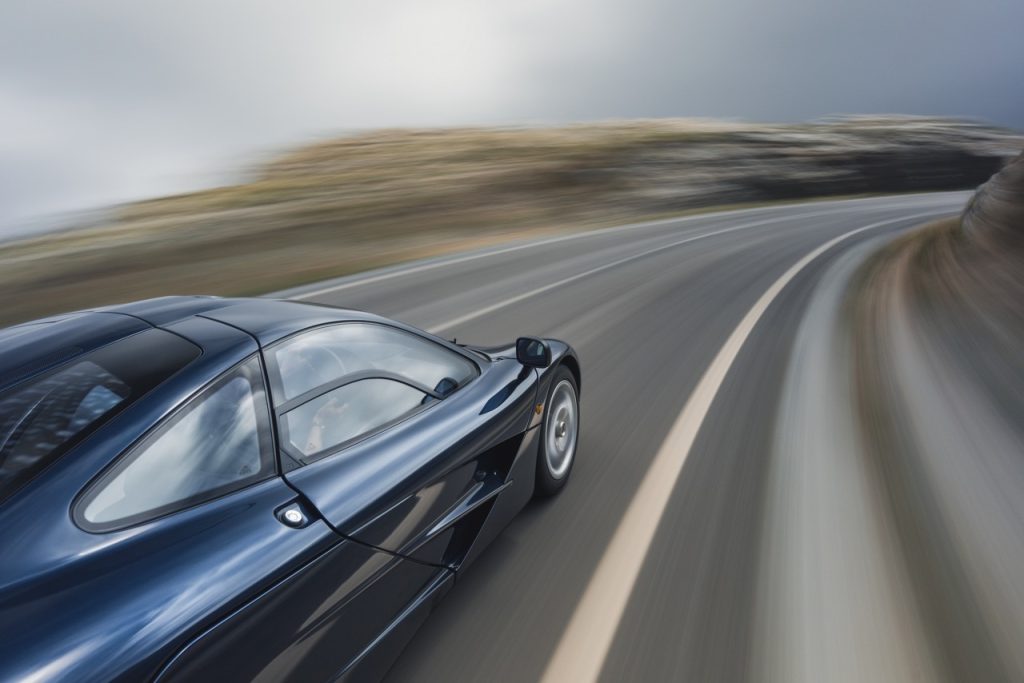
It’s not just the sudden pressure on your back you remember; the experience is elevated to an almost spiritual level by the accompanying sound. As you’re hurled forward, a ferocious, guttural bark fills your ears and seems to reverberate through your bones to their very marrow. Add in the tip-of-the-arrow feeling engendered by the forward-set central seat and it is a driving experience never to be forgotten.
It’s an experience that hasn’t dimmed with time, either. Despite the McLaren F1 being 30 years old, despite the changes in the motoring landscape, the F1 still feels top-tier in so many aspects. That engine still stacks up. The car’s weight seems all but unachievable these days. The performance figures have been surpassed by others, but not by many, and at 240 mph the F1 remains the fastest naturally aspirated production road car.
If Gordon Murray had decided to leave it at that, to push his drawing board into a corner of his office and just focus on collecting T-shirts, his legacy, his place in motoring history would still have been assured. Had he just stuck to things like the T.25 city car and the TVR project, leaving the higher echelons of performance alone, the same would have been true. But he’s chosen to go back. Now we have the GMA (Gordon Murray Automotive) T.50, a clear successor to the legendary F1.
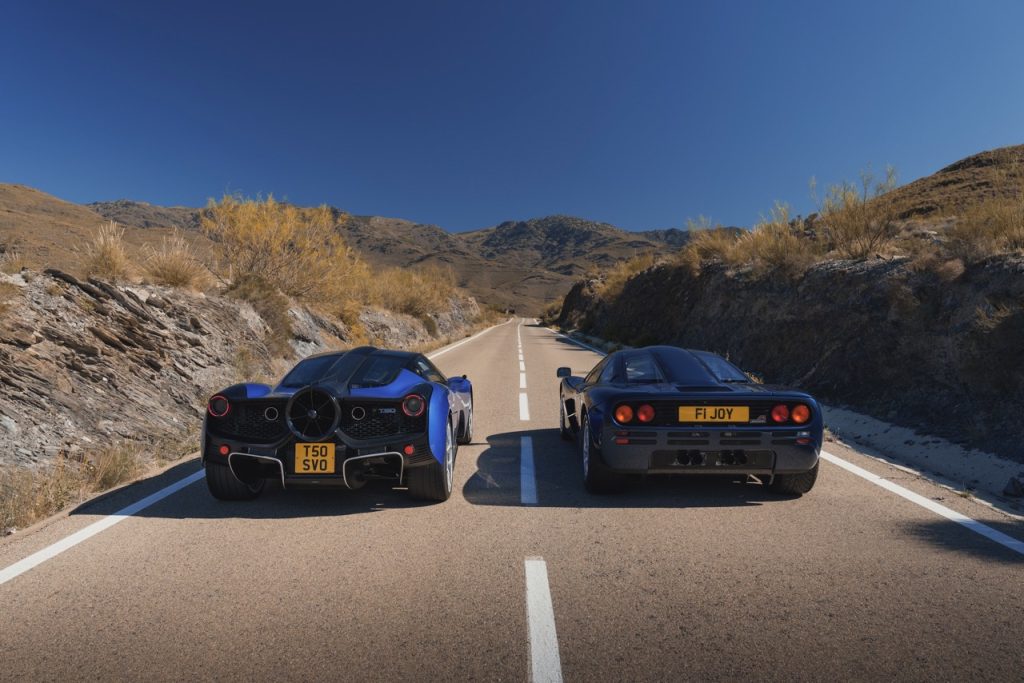
Seeing the two cars parked next to each other, I’m not sure how to feel. Elated, obviously, and the first thing to do is give my arm a good pinch, just to make sure I’m not dreaming. Getting these two together has been a long time in the planning and it seems slightly surreal that everything has finally fallen into place in stunning Spain.

There is a part of me that is also nervous about the T.50. On the one hand, I’m concerned that it might not be able to reach the highs of the F1. It only has 34 bhp more than the F1, not to mention quite a bit less torque: 353 lb ft up against the McLaren’s 479 lb ft. The T.50 is, amazingly, lighter. But will 12.5 per cent be noticeable? And while modernisation of some things will no doubt bring improvements, we all know that modern cars are generally a little less analog, a bit more detached than those that went before. What if this falls a tad flat after the F1?
Then there is the alternative, which is almost equally troubling. You know the point in Cars 3, the bit near the start of the film where Lightning McQueen is suddenly made to look old by the new-age Jackson Storm? Everyone feels sad for McQueen at that point. I don’t want to feel like that about the F1.
In terms of aesthetics, however, I don’t think the F1 needs to worry. The T.50 is curvaceous, with a more flowing, delicate body. The spine that runs from the roof down over the engine is slimmer and the sides are more sculpted – both things Murray wanted to change from the F1. But overall there is still something beguiling about the simpler, more compact McLaren.
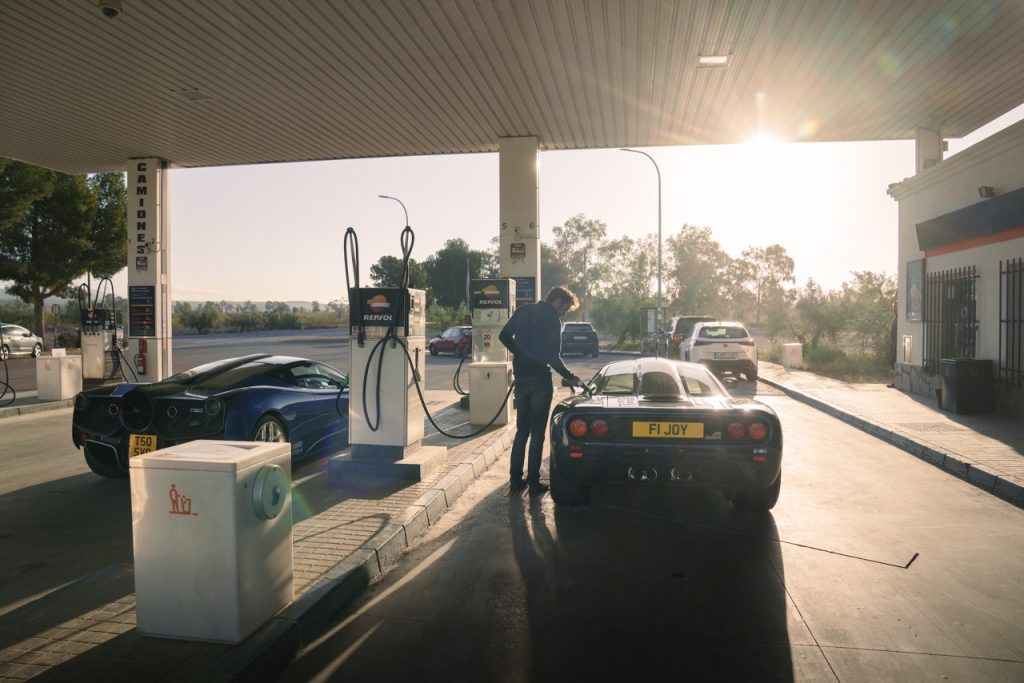
Up close, it’s another story. Take the lights, for example, which are a story in microcosm that represents so much of the F1/T.50 tale. There was no money to develop bespoke lights for the McLaren, so the company had to just choose from a catalogue. The distinctive, but rather large lamps at the rear could also be found gracing the backside of a Bova coach. Murray describes the headlights as having the performance of glowworms in a jar.
By contrast, for the T.50, GMA went to British engineering company Wipac and simply said “we have to be better than anyone else.” So, Wipac benchmarked all the current supercars, found the McLaren 720S had the best headlight spread and throw, then designed something that GMA claims is 15 per cent better. Regardless of performance, the light units certainly look fabulous – particularly the lenses that look like clumps of globular frogspawn.
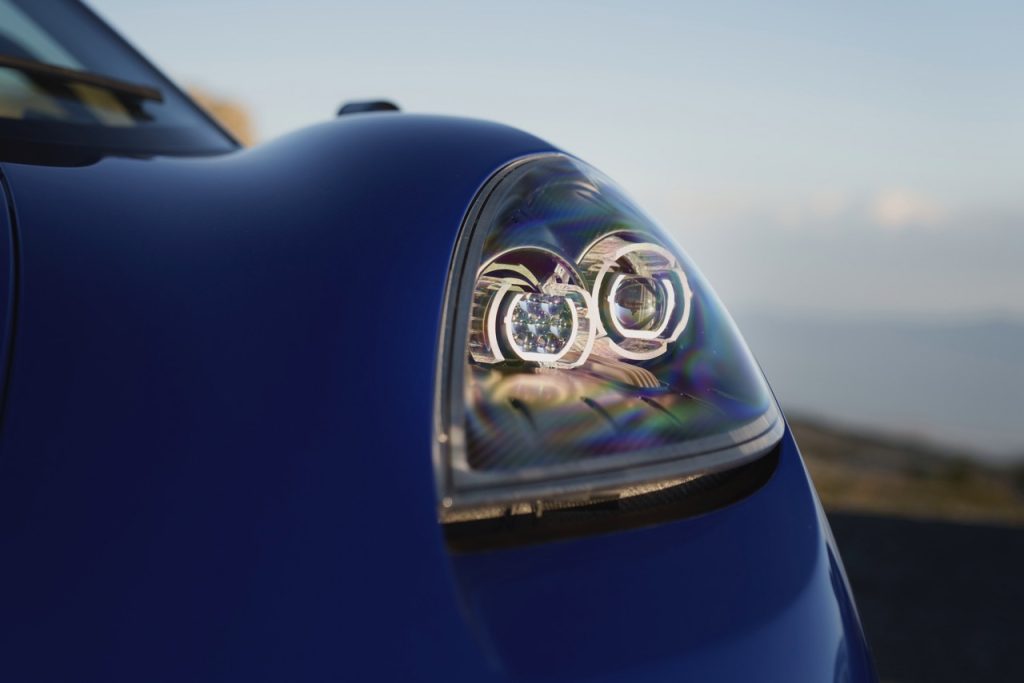
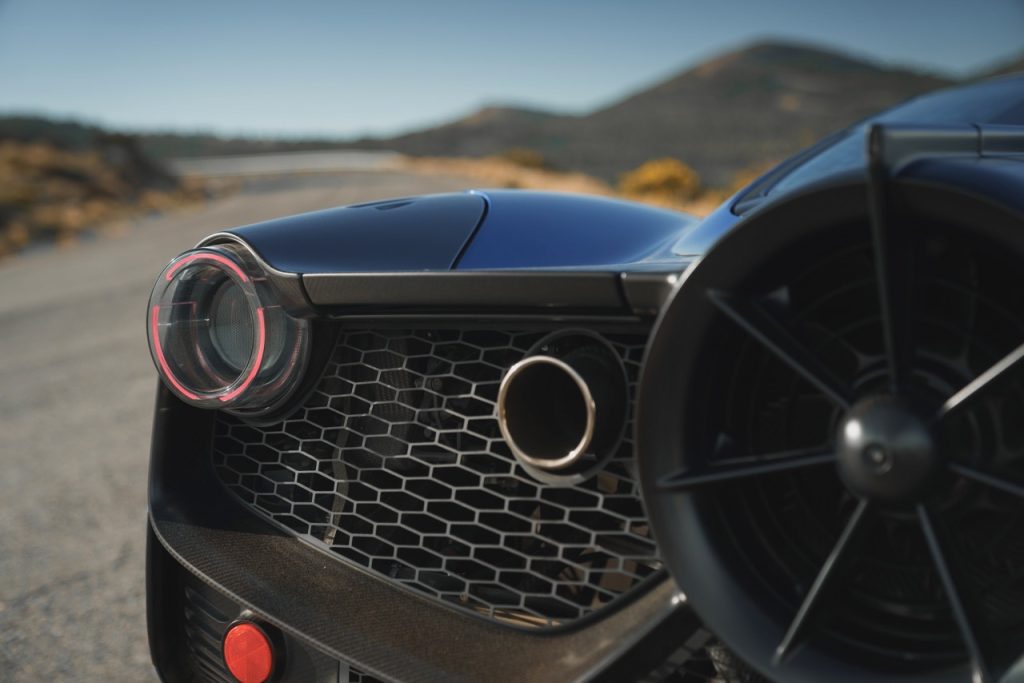

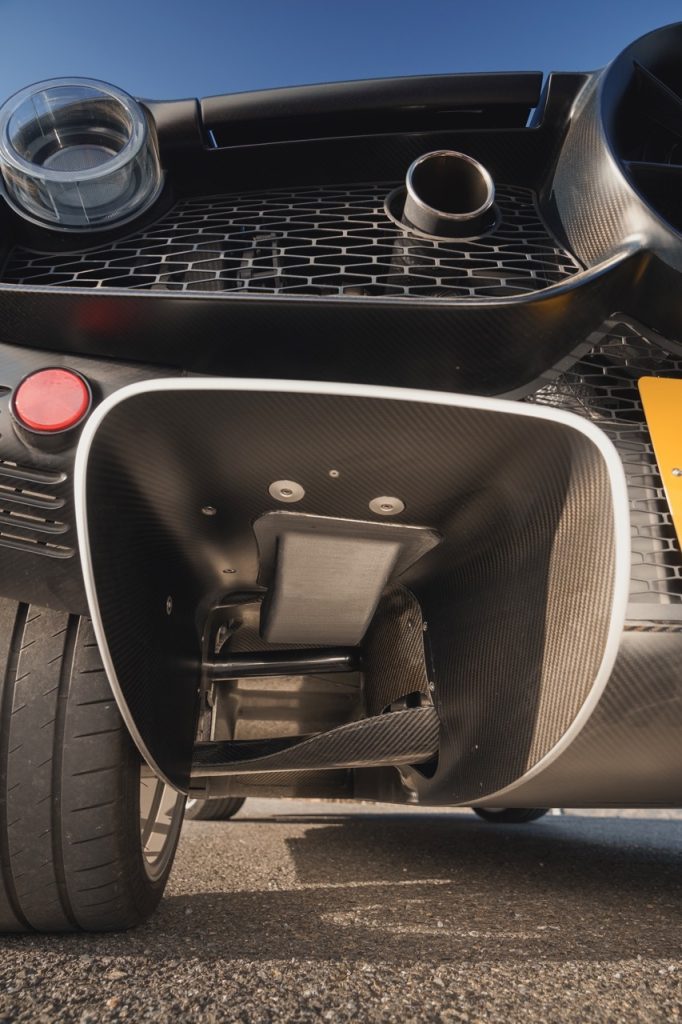
This engineering artistry runs throughout the car, seen and unseen. GMA examined every part over the last few years to see if it could be lighter or more attractive, or preferably both. There are some gorgeous details on the F1, but you can sense and see the vastly greater budget that was given over to the T.50. Nowhere is this more evident than when you get inside – an act that is made a fraction less awkward by the removal of the two beams that divide the cockpit of the F1. The switchgear, door handles, haptics, and stunning central tachometer all reek of quality with a simple, technical style.
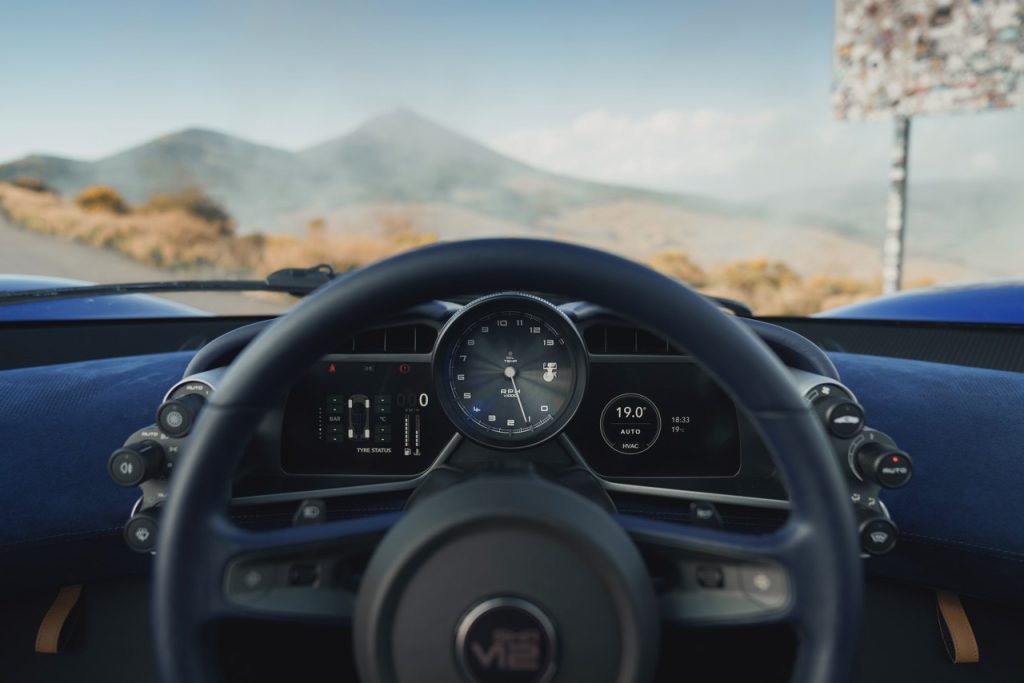
The starting procedure for a T.50 isn’t the work of a moment. You need to make sure the car is awake with a press of the key. Then you give the small Start/Stop button under the little red cover behind the gear lever a single push to bring the screens to life. Wait for them to cycle through for a few seconds… and then give the button another quick push. This will rouse things behind you, but although there is a decent amount of noise it’s still only the preamble of the starter/generator unit. It’s loud enough to fool anyone in the vicinity unused to the procedure into thinking that the engine has started. Which means they will then jump out of their skin 3.5 seconds later when the V12 actually flares up with a yelp like a startled race car. I jumped the first time and, much to others’ hilarity, I was still jumping at the end of three days around a T.50.
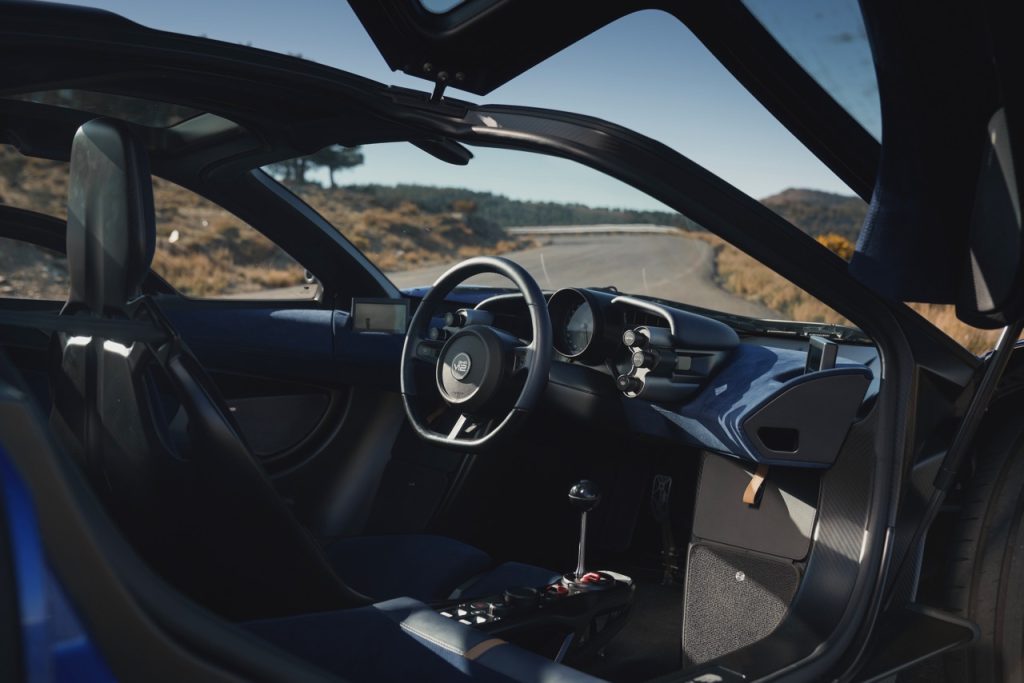
Like the S70/2 engine in the F1, the T.50’s new, bespoke 3.9-litre V12 from Cosworth is definitely the lead character in the cast of components in the car. For a start, it is loud. Even at idle and low speed the noise is noticeably greater than in the F1, to the extent that you might question a long journey. However, with its four throttle bodies and modern mapping it is beautifully tractable from low revs, with no histrionics when asked to putter around, so you’d have no qualms about a trip to town. The default GT throttle map also helps temper the initial response of the accelerator pedal, which makes life a little calmer.
Nonetheless, you are immediately aware that this is an engine with almost no inertia. It gains and loses revs with such alacrity that it’s initially hard to contemplate a world in which you’ll ever have enough sensitivity in your right foot to administer the correct blip on a downshift. It’s like graduating from the ability to have a casual kick-around on Friday to suddenly needing the touch of Messi.
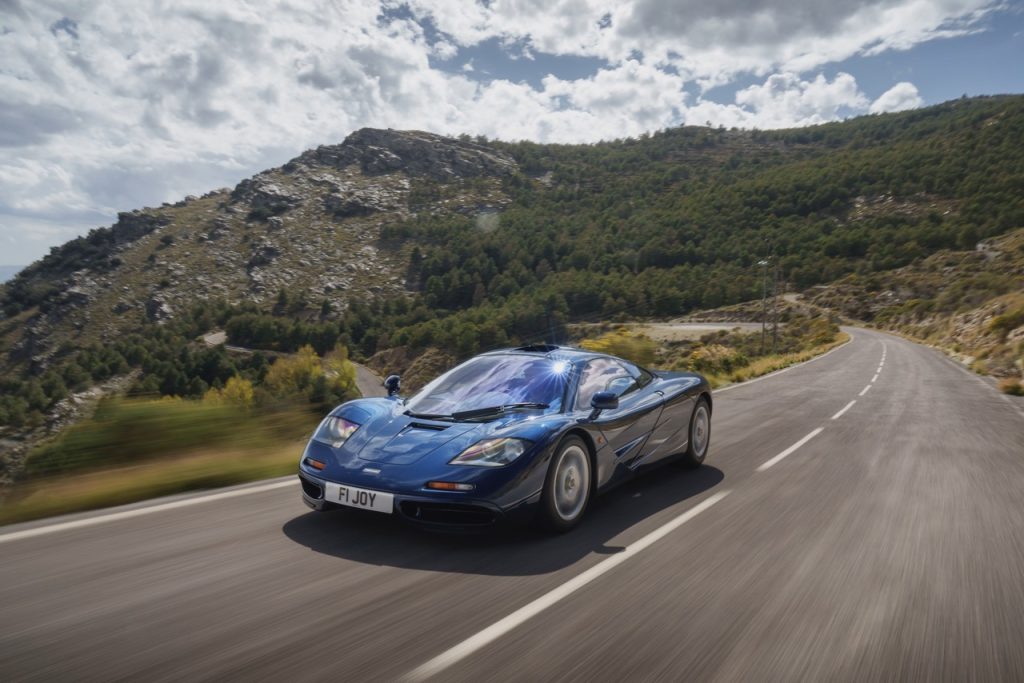
Thankfully, there is a rev-match mode that will do the blips for you. While that might seem anathema in an analog car, trust me, it is very welcome while you get acclimatized. Same goes for beautifully judged electronic stability control; you will see the familiar warning light flashing on the left-hand screen as you begin to push harder on the exit of slower corners, but the interventions are so subtle that you just have a feeling of security rather than any sense of frustration. It all lets you build confidence and get your bearings.
The steering is weighty compared to most cars, but the T.50 demands much less muscle than the F1. Any extra effort builds as you head toward full lock, as expected, so that you have a good sense of the grip from the turning tyres. Like the F1, there is still a certain softness to the front end with a bit of roll, but once you’re used to the way it loads up you can really lean into it and get confidence from the multi-layered messages it relays.
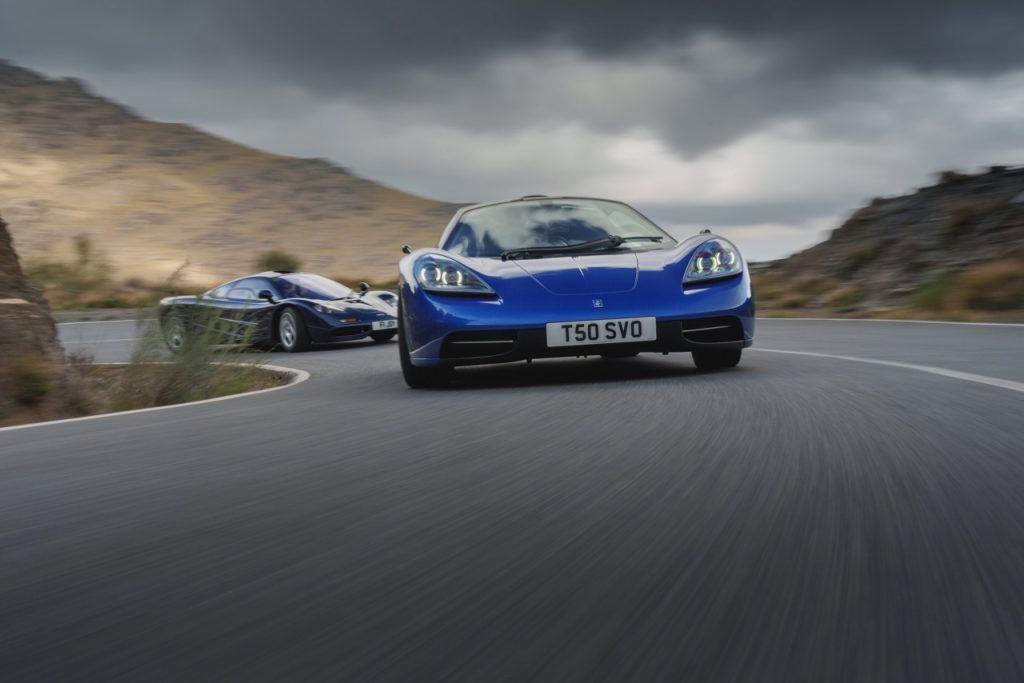
In short, the T.50 is a car that provides huge amounts of entertainment at moderate speeds. Like the F1, it is an occasion just to be in it. And if you only ever used two-thirds of the available revs, you would still feel like you had access to something amazing.
However, where things really depart from the F1 is when you start to push that bit further. In the McLaren you tread carefully as you drive it harder. The weight transfers with that V12 behind you become ever more apparent as you push harder and you need to really take care if you find yourself turning while also braking or accelerating. Momentum will build and it might take some space to gather up. I love the challenge and feel of the F1 at speed, the squirm of the tall-sidewall rubber and the almost gravel-spec-rally-car softness of the suspension. It is intimidating and thrilling in equal measure but it’s not a car you play with. Unlike the T.50.
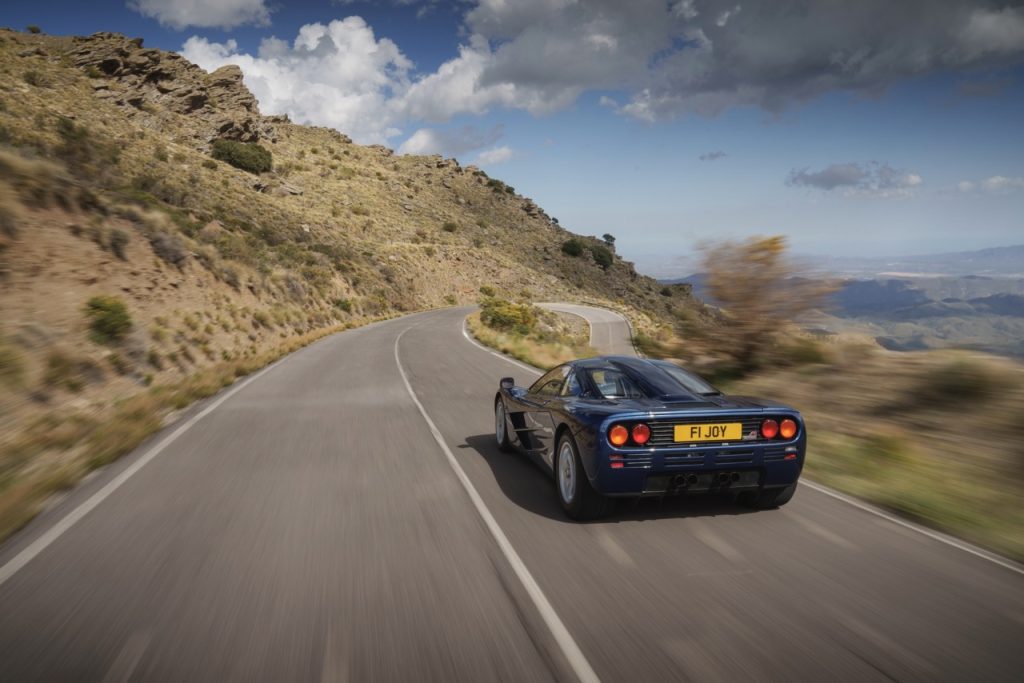
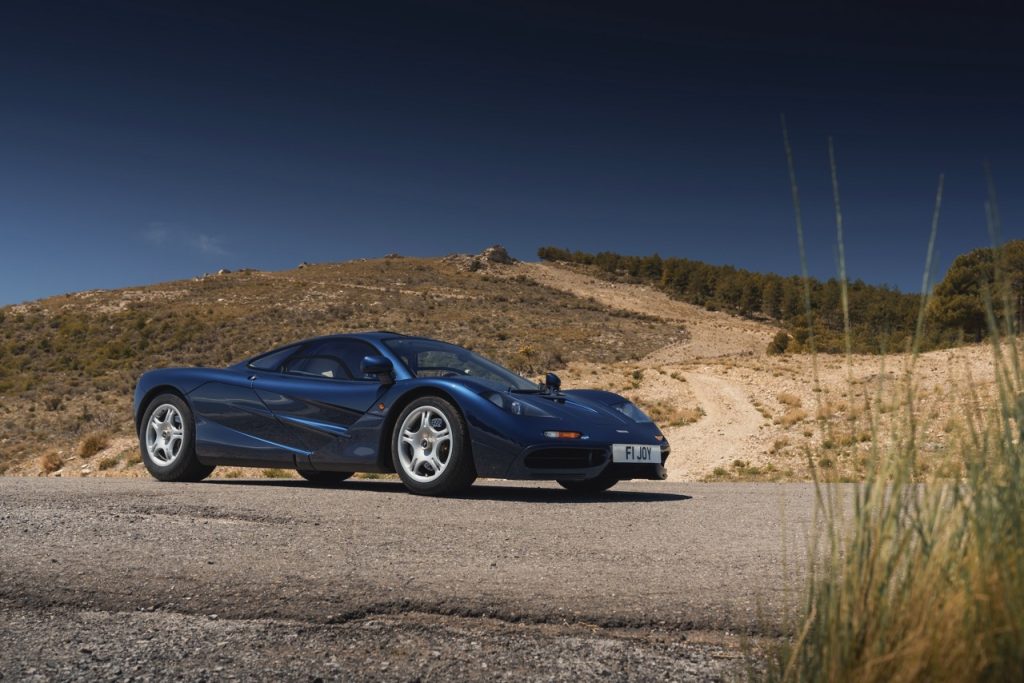
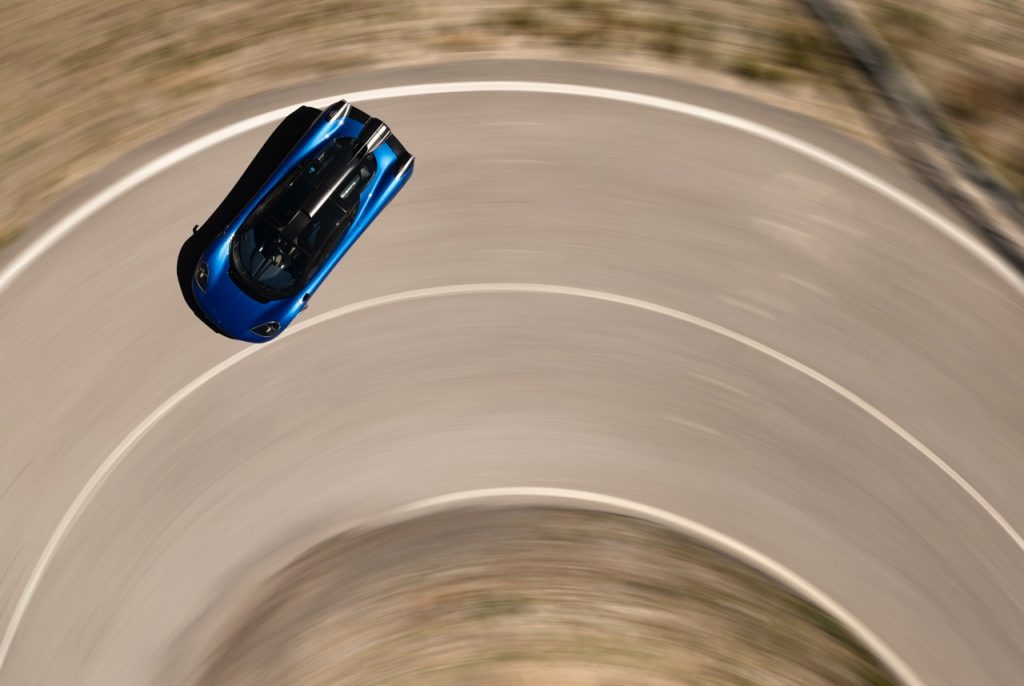
Once you’re dialed in, the GMA machine is one you can grab by the scruff of the neck and drive with commitment and confidence. Where the F1 feels light under acceleration, the T.50 feels light everywhere. Turn off the rev match, set the throttle map to Sport (making it totally linear in its response), dispense with the ESC and you have a car that revels in being taken that step further. The engine weighs a mere 392 pounds (194 less than the F1) and sits so low that you no longer have any issues with weight transfer, so it feels stable where the F1 needs care. Light up the rear tyres and, thanks to a simple Salisbury limited-slip differential, it’s predictable, letting you really use the throttle to help you steer.
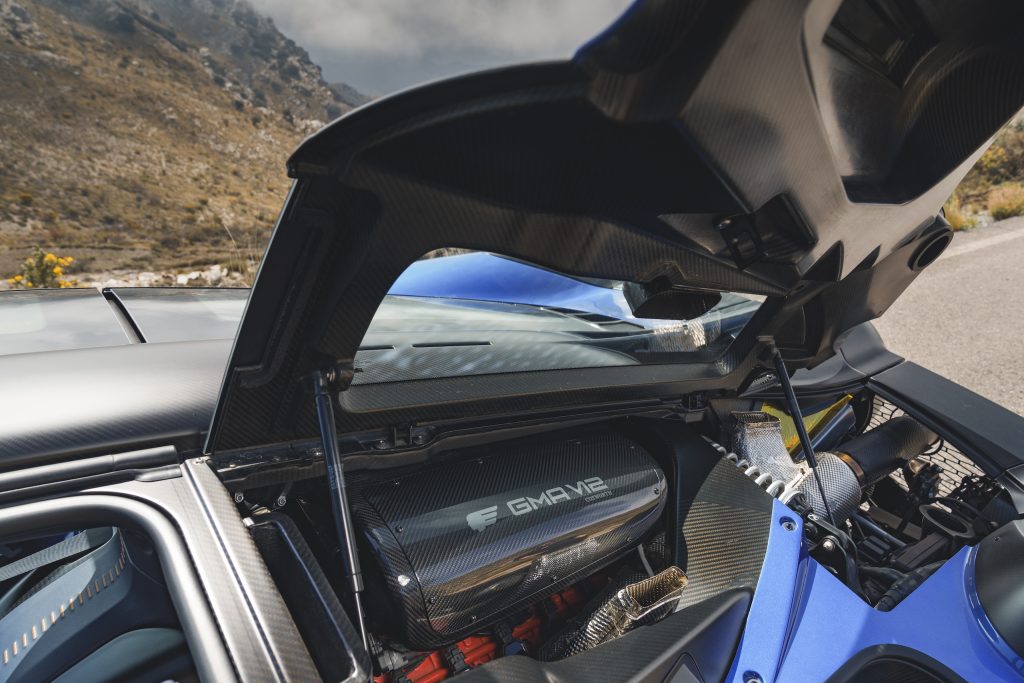
Then there is the engine: a spine-tingling, screaming symphony that responds as sharply as an electric motor. To be in control of something so wild feels extraordinary. And you really are in control, because three pedals and an H-pattern shifter means you have to think and understand the engine in a way that a paddle shift setup lets you bypass. The gearshift is not smooth and slick, it is tight and positive, but it needs to be like that so that you don’t have to think when everything is happening quickly.
Ahead of the drive, I wondered if I’d notice the aero from that remarkable fan at the rear. In practice, you only do in that the braking feels wonderfully stable. To be honest I’m glad that it isn’t some aero grip fest in the corners. I’d much rather it was fun, and it is. The T.50 doesn’t just impress, it induces grins from ear to ear that last for hours, even days hence.
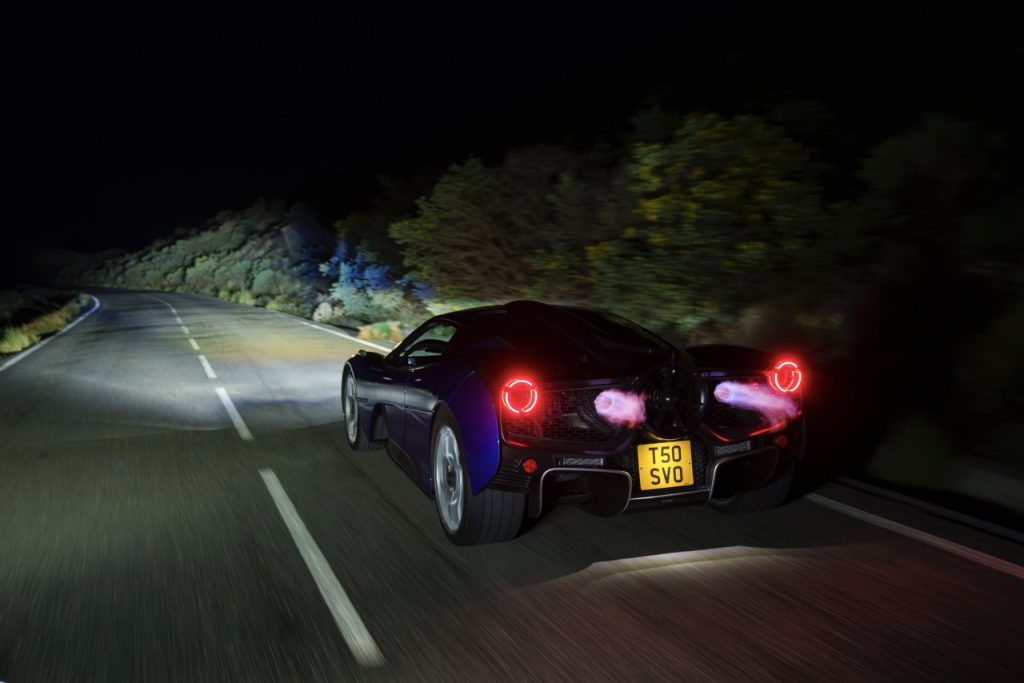
So, after driving the two cars back to back, did the T.50 make the F1 seem somehow obsolete? No. While Gordon Murray’s fingerprints are clearly on both cars and there are many similarities, they also have quite different characters.
For starters, how do you choose between two soundtracks that are so different yet equally spine-tingling? To drive, the F1 feels meatier but also like a supercar you could use as a grand tourer. The T.50 is leaner, more lithe, but also louder and more like a super sports car. Yes, while the F1 was instantly iconic (and still is) simply by virtue of its numbers, but the T.50 really needs to be experienced in order to reveal its utter brilliance. I feel very, very lucky to have done just that.


